15 years one-stop China custom CNC machining parts factory
 149 |
Published by VMT at Apr 23 2025 | Reading Time:About 6 minutes
149 |
Published by VMT at Apr 23 2025 | Reading Time:About 6 minutes
Are you confused about choosing between CNC machining and conventional machining for your project? The decision can be a challenge due to the varied requirements of precision, production volume, and complexity. Both methods have their merits, but understanding the differences can help ensure you select the best option for your specific needs. This article will dive into the key distinctions between CNC machining and conventional machining, highlighting the advantages and disadvantages of both approaches, as well as their suitability for various applications. By the end, you will have a clearer idea of which method is ideal for your project’s demands.
CNC machining provides a modern, automated solution that offers high precision, complex part production, and efficiency for large-scale production. Conventional machining, however, remains a strong contender for projects requiring flexibility, artisanal craftsmanship, and lower upfront costs for small runs or prototypes. Understanding these differences will help you make the right choice for your machining needs.
Now that you have an overview of what both CNC machining and conventional machining entail, let's explore each method in more detail. Understanding how CNC machining works, its advantages, and where conventional machining excels can guide your decision-making process for the best results.
CNC machining involves the use of computer-controlled machines to perform various cutting, drilling, milling, and turning operations on materials. The process is highly automated, offering superior precision and repeatability. CNC machines are capable of producing intricate parts with complex geometries, ensuring high consistency and minimal error. This makes CNC machining the go-to option for industries that require tight tolerances, such as aerospace, automotive, and medical devices.
CNC machining is ideal for both small and large production runs. Once the program is set, the machine operates continuously without requiring manual intervention, making it perfect for high-volume production. The precision and ability to produce complex parts are among the biggest advantages of CNC machining. However, while CNC machining offers several benefits, its initial investment and maintenance costs can be significant.

High Accuracy and Repeatability
One of the standout advantages of CNC machining is its incredible accuracy. Computer-controlled machines are programmed to execute specific movements with high precision, ensuring that each part produced meets the required specifications. This level of repeatability ensures that every part is identical, making CNC machining perfect for mass production and applications where consistency is critical.
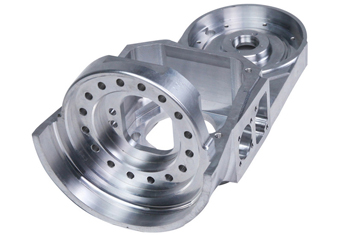
Ability to Produce Complex Shapes and Highly Complex Parts
CNC machines can handle highly complex designs that would be near impossible to achieve manually. With the right programming, CNC machining can produce intricate and complex geometries, enabling the creation of parts with precise features like holes, slots, threads, and curves. This makes CNC machining ideal for industries such as aerospace, automotive, and medical device manufacturing.
Reduces Human Error and Improves Safety
Because CNC machining is automated, the risk of human error is significantly reduced. The use of computers to control the machining process means that operators only need to ensure that the machines are set up correctly, reducing mistakes and improving safety. Moreover, CNC machines can run autonomously 24/7, providing a more streamlined and efficient production process.
Efficient High-Volume Production
Another benefit of CNC machining is its ability to produce large quantities of parts in a relatively short amount of time. Once a machine is programmed, it can run continuously with minimal intervention, ensuring faster production and reduced labor costs. This is particularly advantageous for industries that require high-volume production, such as automotive manufacturing or the production of electronic components.
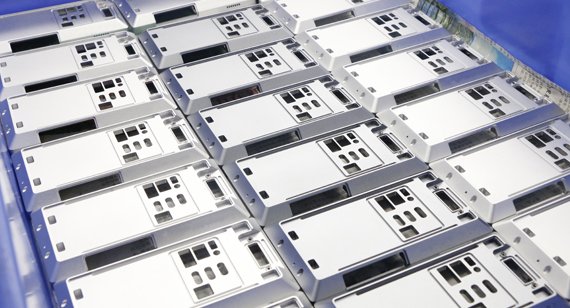
24/7 Operation
CNC machines can be left to run overnight or during off-hours, allowing for 24/7 operation without additional labor costs. This makes it possible to keep production lines running and meet tight deadlines or production targets without the need for a large workforce working extended hours.
Higher Initial Investment and Maintenance Costs
CNC machines come with a higher upfront cost compared to conventional machines. Additionally, maintenance can also be expensive due to the need for specialized parts and software updates. This can be a significant factor for smaller companies or those operating on tight budgets. However, these costs are offset by the machine's long lifespan and ability to handle high volumes of production efficiently.
Requirement for Skilled Operators and Programmers
Although CNC machines are automated, they still require skilled operators and programmers to set up and maintain them. The machines are typically operated by highly trained professionals who can troubleshoot any issues, optimize production runs, and ensure the machines are running smoothly. This can require significant training and expertise.
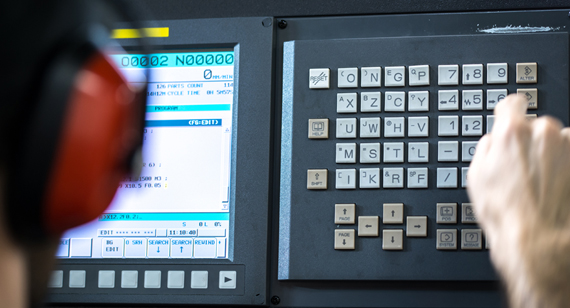
Less Cost-Effective for Small-Volume Production
While CNC machining is highly efficient for large production runs, it may not be the most cost-effective solution for small-volume production. The initial setup and programming costs can be relatively high for small batches, making conventional machining a more economical choice for lower volumes or prototyping.
Conventional or conventional machining involves manual processes where an operator physically controls the machine to shape or cut materials. These processes include turning, milling, drilling, and grinding, typically using lathes, mills, and drill presses. While conventional machining is less automated than CNC machining, it offers flexibility for custom parts and smaller runs, which is why it remains popular in certain industries.
Conventional machining is often employed for parts that don’t require the high precision or complexity of CNC machined components. It also excels when the part design requires hands-on manipulation or artistic craftsmanship. With conventional machining, operators can adjust the process mid-operation, making it suitable for experimental or low-volume production where the final product design is still in flux.

Advantages of Conventional Machining
Lower Initial Investment
One of the primary benefits of conventional machining is the lower initial investment. Conventional machines are less expensive than CNC machines, and they don’t require complex programming or maintenance. This makes them a good choice for small businesses or operations where capital expenditure is limited.
Flexibility for Small Batches and Prototypes
Conventional machining is ideal for producing small batches or prototypes. Since the process is manually controlled, it offers greater flexibility in terms of part adjustments. If changes need to be made during production, conventional machining can often accommodate them without the need for reprogramming or major adjustments.
Easier to Change or Adjust Mid-Process
With conventional machining, operators can adjust the process on the fly, making it easier to change designs, adapt to new materials, or modify part features mid-production. This adaptability is particularly valuable in the prototyping phase or when there are frequent changes in the part design.
Suitable for Simple Parts and Operations
For simple parts with basic geometries, conventional machining is highly efficient. It’s a cost-effective choice for straightforward, low-complexity tasks. When high precision and intricate shapes are not a necessity, conventional machining remains a reliable option.
Disadvantages of Conventional Machining
Lower Accuracy and Repeatability Compared to CNC
While conventional machining is capable of producing accurate parts, it does not offer the same level of precision or repeatability as CNC machining. This can be a drawback when consistent, high-precision parts are required, as slight deviations can accumulate over multiple production cycles.
Higher Potential for Human Error
Since conventional machining relies on manual operation, there is a higher potential for human error. Operators may make mistakes when setting up machines or during the cutting process, leading to defective parts or wasted materials.
Slower Production Speed and Efficiency
Conventional machining tends to be slower compared to CNC machining. Manual processes take more time, especially when dealing with complex or repetitive tasks. This can result in longer production cycles, making conventional machining less efficient for high-volume production.
Requires Highly Skilled Operators
Conventional machining requires operators to have specialized skills and experience to ensure the machine is operated correctly. This reliance on skilled labor can lead to higher labor costs and may limit the scalability of production.
When it comes to manufacturing, understanding the difference between CNC machining and conventional machining is essential for selecting the most suitable method for your project. While both methods can achieve similar results, the technologies and processes behind them are significantly different. CNC machining, driven by computer automation, excels in precision and efficiency for complex parts, while conventional machining offers flexibility and is more suited for low-volume runs or simpler designs. In this article, we'll explore the key differences between these two approaches, helping you make an informed decision based on your specific needs.
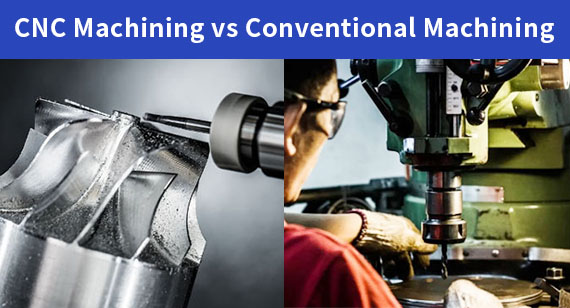
Part Accuracy and Consistency
CNC Machining: One of the major advantages of CNC machining is its exceptional accuracy and consistency. CNC machines are programmed to follow precise instructions, ensuring that each part is made to exact specifications. The level of automation reduces the likelihood of human error, which results in high repeatability over large production runs. This makes CNC machining ideal for industries that demand tight tolerances, such as aerospace, medical devices, and automotive.
Conventional Machining: Conventional machining typically involves manual operation, where human skill plays a larger role in the process. While skilled machinists can achieve high accuracy, the consistency of the parts can vary from one cycle to the next. This manual nature of conventional machining increases the potential for error and makes it harder to achieve the same level of precision consistently. It is less effective for high-volume production where uniformity is key.
Complexity and Versatility
CNC Machining: CNC machining is highly versatile, capable of producing parts with intricate shapes and complex geometries that would be nearly impossible with conventional methods. It can handle multiple operations, such as milling, drilling, turning, and grinding, all in one setup. CNC machines are equipped with advanced features like multi-axis machining, which allows for the creation of 3D parts with fine detail and precision.
Conventional Machining: While conventional machining offers significant versatility in terms of the types of operations it can perform (turning, milling, drilling, etc.), it is limited when it comes to complex part geometries. For intricate or multi-featured parts, conventional machining may require multiple setups, making it slower and less efficient. While conventional machines are more adaptable for simpler parts or quick adjustments, they cannot match the complexity that CNC machines handle with ease.
Speed and Efficiency
CNC Machining: Speed and efficiency are key advantages of CNC machining. Once set up, CNC machines can operate continuously, producing large batches of parts without needing much human intervention. This automation reduces downtime and labor requirements, resulting in faster production cycles. CNC machining is ideal for large production runs, where time is critical, as it can produce hundreds or even thousands of identical parts in a short period.
Conventional Machining: Conventional machining tends to be slower than CNC machining, primarily due to the manual involvement required at each stage. Each part must be set up, operated, and adjusted by the machinist, leading to longer production times, especially for more complex or detailed parts. While conventional machining can be more efficient for small runs or individual prototypes, it lacks the speed of CNC machining for large-volume production.
Labor Requirements
CNC Machining: Although CNC machining is automated, it still requires skilled operators and programmers to set up and monitor the machines. The setup process involves programming the machine, loading materials, and ensuring that the machine runs smoothly. Once set up, the CNC machine can operate with minimal human intervention. However, skilled technicians are still needed to troubleshoot issues, make adjustments, and ensure the quality of the parts.
Conventional Machining: Conventional machining requires a higher level of human involvement throughout the entire process. Operators are needed to manually control the machines, set up the tooling, adjust parameters, and make corrections during the machining process. While the labor requirement can be higher, it also allows for more direct control over the part’s final outcome, making it a better fit for certain custom or one-off parts.
Operation Skill Requirements
CNC Machining: CNC machining requires operators to have specialized knowledge in programming, troubleshooting, and machine maintenance. Operators must understand how to create or modify machine programs, as well as how to diagnose and resolve issues that arise. In some cases, CNC machinists may need a background in computer-aided design (CAD) and computer-aided manufacturing (CAM) to effectively design and create the parts.
Conventional Machining: While conventional machining also requires skilled operators, the skill set focuses more on manual dexterity and experience. Machinists need to understand how to manually operate the machines, adjust cutting tools, and ensure that parts are manufactured to the correct specifications. While CNC machining demands technical and programming expertise, conventional machining relies more on hands-on, practical skills.
Cost and Investment
CNC Machining: The upfront cost for CNC machining is higher due to the price of the machines and the necessary software. Additionally, maintenance costs and the need for skilled labor to operate and program the machines can further increase costs. However, over time, the efficiency and speed of CNC machining can lead to cost savings, especially in high-volume production runs. For businesses looking to produce complex parts in large quantities, CNC machining can be a more cost-effective solution.
Conventional Machining: Conventional machines are typically less expensive to purchase and set up compared to CNC machines, making them a more affordable option for small businesses or operations with limited budgets. The cost of operation can also be lower, as conventional machining doesn’t require expensive software or specialized training. However, it is important to note that conventional machining can be less efficient for high-volume production, potentially increasing labor costs over time.
Flexibility and Adaptability
CNC Machining: While CNC machines excel at producing high-precision parts, they are less flexible when it comes to making adjustments or changes mid-production. If a design change is required, it often means reprogramming the machine, which can lead to downtime and added costs. However, CNC machines are adaptable in terms of the variety of materials they can process and the complexity of the parts they can produce, which makes them ideal for industries that require both precision and adaptability in design.
Conventional Machining: One of the key advantages of conventional machining is its flexibility. If changes need to be made during the production process—whether it’s a design modification or a material adjustment—operators can easily accommodate them. This adaptability makes conventional machining ideal for one-off projects, prototypes, or short production runs where flexibility is crucial. However, this flexibility comes at the cost of reduced efficiency and higher potential for error compared to CNC.
CNC Machining: CNC machines can work with a wide variety of materials, including metals (such as stainless steel, aluminum, and titanium), plastics, composites, and even wood. The versatility of CNC machining makes it suitable for producing parts across multiple industries. Advanced CNC machines can handle difficult-to-machine materials and perform operations such as threading, turning, and drilling with high precision.
Conventional Machining: Conventional machining also allows for the processing of a wide range of materials, but it may be more limited when it comes to harder or more complex materials. Manual machines are often more challenging to work with difficult materials, and adjustments are more difficult to make on the fly. While conventional machining is suitable for many materials, it may not be as effective as CNC machining when it comes to advanced materials or materials requiring complex geometries.
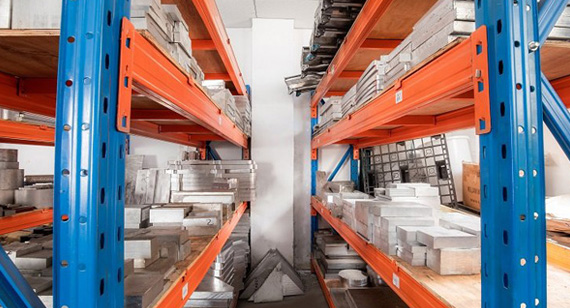
Production and Efficiency
CNC Machining: CNC machining offers excellent throughput, especially for large-scale production. Once a machine is programmed, it can operate continuously with minimal intervention, producing hundreds or thousands of parts in a fraction of the time required by conventional methods. The high speed and automation reduce cycle times and allow for maximum efficiency, making CNC machining the preferred method for mass production.
Conventional Machining: Conventional machining is less efficient for high-volume production. Each part needs to be set up and operated manually, which increases the cycle time. This makes conventional machining better suited for low-volume production, prototypes, or custom parts where high-speed production is not a requirement. While conventional machines can be used for large runs, their speed and efficiency will not match the capabilities of CNC machining.

Conclusion
The choice between CNC machining and conventional machining ultimately depends on your project’s requirements. CNC machining excels in speed, precision, and high-volume production, making it ideal for complex parts and industries that demand tight tolerances. Conventional machining, on the other hand, offers flexibility and lower initial investment, making it better suited for smaller batches or simpler parts. By understanding the key differences, you can select the method that best aligns with your production needs and goals.
| Features |
CNC Machining |
Conventional Machining |
| Precision and Complexity of Parts |
High-precision, consistent, complex parts possible |
Lower-precision and simpler parts |
| Material Type |
Wider range, including hard and brittle materials |
Softer materials |
| Production Volume and Efficiency |
High-volume production; automated, fast, and more efficient |
Lower volume parts; manual, slower, less efficient |
| Cost-Effectiveness |
High initial cost, lower long-term cost (large volume) |
Lower initial cost, higher potential for long-term cost (large volume) |
| Skill Requirements for Operation |
Less operator skill required; programming skill needed |
High operator skills required |
Both CNC machining and conventional machining play vital roles across various industries, yet each excels in different applications based on their inherent strengths. CNC machining is particularly advantageous for producing complex, high-precision parts with high repeatability and speed. Meanwhile, conventional machining remains relevant in situations that require flexibility, quick adjustments, or are less reliant on automation. In this section, we’ll explore how these machining methods are applied in key industries like aerospace, automotive, medical, electronics, industrial, and optical manufacturing.
Aerospace
CNC Machining in Aerospace: The aerospace industry demands the highest levels of precision, reliability, and quality. CNC machining is widely used in this sector for the production of complex parts such as turbine blades, structural components, and engine parts. These components must meet strict standards for safety and performance, and CNC machines can achieve the necessary tolerances and geometric accuracy. Additionally, CNC machining supports the use of advanced materials like titanium and high-strength alloys, which are common in aerospace components.
Conventional Machining in Aerospace: Although CNC machining has taken over much of the aerospace manufacturing process, conventional machining is still used for certain parts or projects. Small runs of parts or simpler components may still be produced using conventional machines. Additionally, conventional machining offers flexibility in prototype creation, where changes and adjustments can be made quickly during the design process.
CNC Machining in Automotive: CNC machining is indispensable in the automotive industry, particularly for producing engine components, transmission parts, and precision-machined gears. High-performance vehicles, electric cars, and other specialized machines require parts that meet exact specifications for safety and efficiency. CNC’s ability to work with different materials, including metals and plastics, makes it ideal for creating complex automotive parts like cylinder heads, crankshafts, and chassis components. It also plays a vital role in the mass production of components for vehicle assembly lines.
Conventional Machining in Automotive: Conventional machining is still commonly used for automotive applications where the part designs are less complex or where small-batch production is required. Custom or specialty parts for limited-edition models or prototype vehicles may be manufactured using conventional methods. Additionally, low-cost, high-volume parts that don’t require the precision of CNC can be produced efficiently using conventional machines.

CNC Machining in Medical: In the medical industry, precision and cleanliness are critical, especially when manufacturing implants, surgical instruments, or prosthetic devices. CNC machining is used to create highly precise, custom parts such as orthopedic implants, dental crowns, and joint replacements. The ability of CNC machines to work with biocompatible materials, including titanium and surgical-grade stainless steel, makes them indispensable in medical device manufacturing. CNC machining also supports the development of complex medical components like heart valves and diagnostic equipment, where high precision is necessary for patient safety and effectiveness.
Conventional Machining in Medical: While CNC machining dominates in medical manufacturing, conventional machining techniques are still used for simpler, lower-volume parts or prototypes. Manual lathes, mills, and grinders can be used to fabricate one-off parts or for applications where speed and cost are prioritized over complexity. Additionally, skilled machinists may use conventional methods for intricate work that requires an artisan’s touch or a high level of customization.
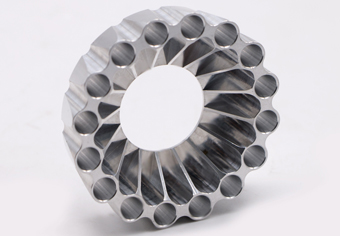
CNC Machining in Electronics: The electronics industry requires components with high precision and often intricate designs, such as circuit board housings, connectors, and heat sinks. CNC machining allows for the creation of small, complex parts with excellent tolerances. Whether it’s for smartphones, computers, or other consumer electronics, CNC machining ensures that components fit together seamlessly. CNC machines are also used to produce prototypes for new electronic devices before mass production, enabling rapid development and testing of new products.
Conventional Machining in Electronics: In the electronics sector, conventional machining is typically used for low-volume production or for less complex components that do not require the precision of CNC. For example, small enclosures or brackets that support electronic devices may be made using manual milling or turning operations. Conventional machining also plays a role in the development of custom or one-off parts for specific electronic devices.
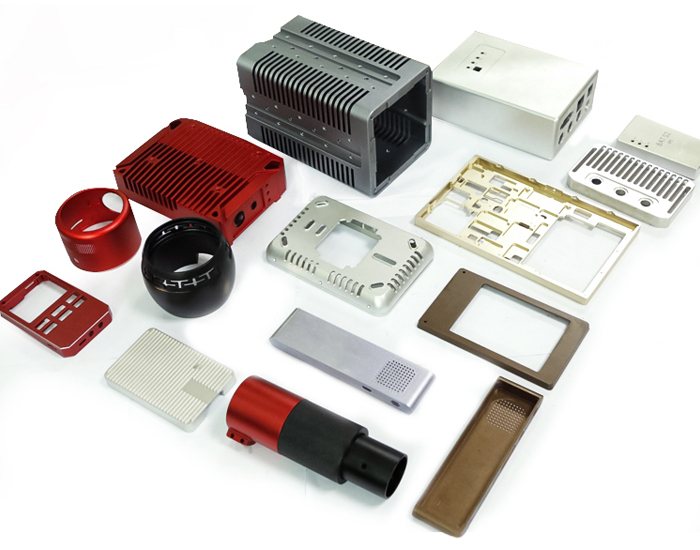
CNC Machining in Industrial Applications: Industrial applications often require large-scale, high-volume production, along with the ability to machine tough materials such as steel, aluminum, and brass. CNC machining excels in these areas by enabling the creation of highly detailed industrial components like gears, bearings, valves, and hydraulic components. These parts often need to meet strict dimensional tolerances, which is where CNC machining stands out. Additionally, CNC machines are ideal for mass production, reducing production time while maintaining high consistency and accuracy.
Conventional Machining in Industrial Applications: Conventional machining is frequently employed in industries that involve low-volume, custom, or one-off parts, such as custom machinery or prototype development. For example, older or more specialized industrial equipment that doesn't require the volume output of CNC can still be serviced or produced using conventional machines. Conventional machining methods are also used for components that are easier to machine or require specific machining processes like grinding or polishing.
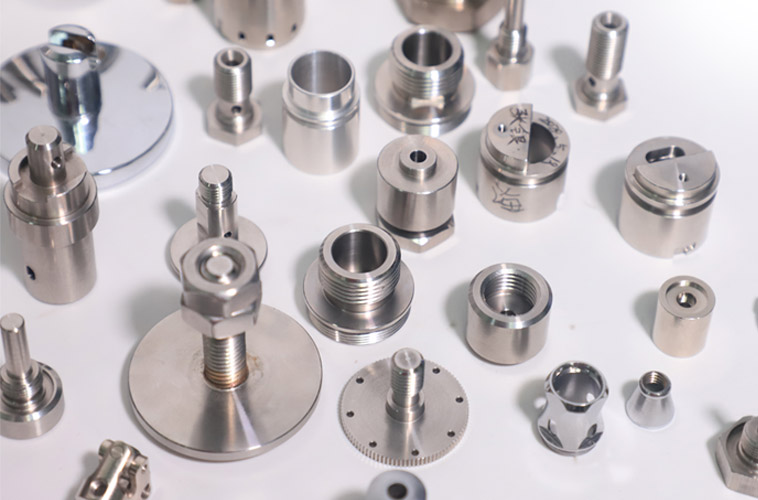
CNC Machining in Optical Applications: Optical components like lenses, mirrors, and camera parts require extreme precision and accuracy. CNC machining is ideal for producing these parts, as it can work with highly reflective and delicate materials like glass and optical plastics. CNC’s precision allows for the creation of optical housings, frames, and mounting parts, as well as the fine detailing needed for high-performance optical systems. Whether it’s for cameras, microscopes, or telescopes, CNC machining ensures that parts meet the rigorous standards required for optical clarity and performance.
Conventional Machining in Optical Applications: Conventional machining methods are still employed in some optical applications, especially for simpler components or for smaller production runs. For instance, manual lathes and grinders may be used to shape and finish optical lenses or mirrors, particularly when a more customized or artisanal approach is required. Although CNC has largely taken over in this field, conventional machining can still be relevant for specific, low-volume tasks where fine detail and careful craftsmanship are needed.
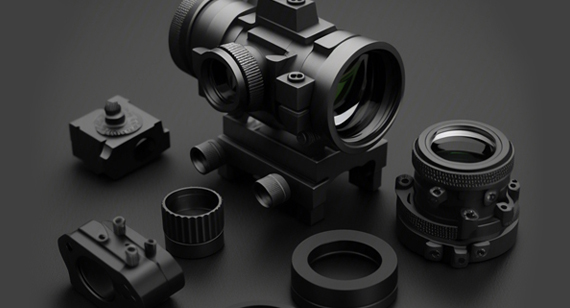
Conclusion
Both CNC and conventional machining are integral to the manufacturing process across diverse industries. CNC machining offers speed, precision, and consistency, making it ideal for complex parts and high-volume production. In contrast, conventional machining remains relevant in applications requiring flexibility, customization, and low-volume production. Understanding the applications of each method helps businesses and manufacturers determine which approach to use, depending on factors such as part complexity, production volume, and cost constraints.
When it comes to selecting between CNC machining and conventional machining, several factors must be taken into consideration. The right choice depends largely on the specific needs of the project, including the production volume, complexity of the parts, budget, and time constraints. While CNC machining is ideal for high-volume, precision-based production, conventional machining may still hold advantages in scenarios that require flexibility, lower upfront costs, or simpler designs. In this section, we’ll break down the key factors to consider when choosing the most suitable machining method for your project.
Production Volume
CNC Machining: One of the most significant factors influencing the decision between CNC machining and conventional machining is the production volume. CNC machining is highly efficient for high-volume production due to its automated process and ability to operate continuously, 24/7, once set up. This makes it an ideal choice for mass production runs, where the same part needs to be produced consistently with minimal variation. CNC machines excel at maintaining tight tolerances across multiple parts, ensuring high levels of accuracy and repeatability, making them indispensable for industries such as automotive and aerospace.
Conventional Machining: On the other hand, conventional machining is typically better suited for low-volume or custom part production. Since conventional machines like manual lathes or mills require more manual labor, they are more flexible and can easily adapt to different part designs. For small batches or prototype production, conventional machining can be more cost-effective and faster to set up. This method is ideal when only a few parts need to be produced or when the design is still in development and changes are frequent.
Complexity of Parts
CNC Machining: The complexity of the part is another key factor. CNC machining stands out in applications that require intricate designs, tight tolerances, and multi-dimensional cutting. If a part needs to feature complex geometries, curved surfaces, or internal cavities, CNC machining is likely the best choice. The ability to program a CNC machine to follow a precise path means that it can easily handle highly complex parts that might be difficult or time-consuming to achieve with conventional machines. For example, creating parts with multiple steps, such as aerospace components or medical implants, is far easier with CNC.
Conventional Machining: While conventional machining can produce simpler parts, it may struggle with more complex geometries, especially if multiple operations are required. Complex cuts or features like internal threads, intricate patterns, or undercuts can be difficult to produce consistently with conventional methods, especially if high precision is required. In cases where the design is straightforward and doesn’t demand advanced capabilities, conventional machining can still offer a viable solution.
Budget Constraints
CNC Machining: CNC machining often comes with higher upfront costs due to the complexity of the machinery and the need for skilled operators to program and monitor the machines. Additionally, specialized CNC machines may require significant investment, particularly if custom tooling or fixtures are needed. However, when considering the long-term benefits of reduced labor costs, increased productivity, and lower defect rates, the cost of CNC machining can be offset over time, particularly in high-volume production runs.
Conventional Machining: For projects on a tighter budget, conventional machining is often more economical in terms of setup and labor costs. Conventional machines are typically less expensive to purchase and maintain than CNC machines, and they don’t require the same level of programming expertise. However, while the cost per part may be lower for small batches, the labor-intensive nature of conventional machining can increase costs for larger production runs. Moreover, the lower accuracy and higher risk of human error could lead to additional costs in rework and scrap.
Schedule Requirements
CNC Machining: CNC machining is often the preferred choice when schedule requirements are tight. Once the initial setup and programming are completed, CNC machines can operate continuously, ensuring faster production times and consistency across large quantities of parts. The automation inherent in CNC machining minimizes downtime and increases overall throughput, making it ideal for projects where speed is essential. Furthermore, CNC machines can produce parts faster with minimal intervention, reducing the lead time for high-volume orders.
Conventional Machining: Conventional machining may not be as fast as CNC, especially for larger production volumes or complex parts. The manual nature of conventional machining means that setup times can be longer, and more operator involvement is required throughout the production process. For small batches or customized parts, however, conventional machining may be faster if only a few parts are needed and if no complex setup or tooling is involved.
Conclusion
Choosing between CNC and conventional machining depends on a combination of factors, including the production volume, complexity of the parts, budget, and time constraints. CNC machining is perfect for high-volume production, complex parts, and tight tolerances, though it comes with higher initial costs. On the other hand, conventional machining remains valuable for low-volume production, simpler parts, and projects with budget limitations. By carefully evaluating these factors, you can make an informed decision about which machining method best suits your specific project needs. Whether you choose CNC or conventional machining, both offer unique advantages that can help meet your manufacturing goals.
When it comes to machining, both CNC (Computer Numerical Control) machining and conventional machining have their respective strengths and weaknesses. The answer to whether CNC machining is better than conventional machining depends largely on the specific needs of the project at hand. To help you decide, let’s break down the key differences and the advantages of each.
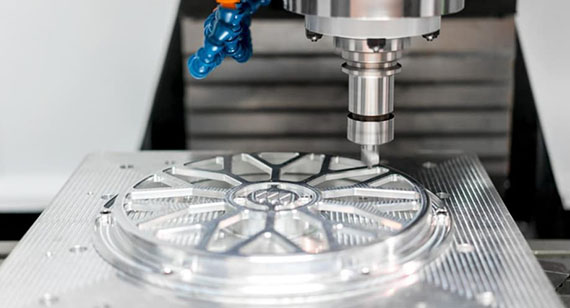
Precision and Consistency
CNC Machining: One of the most significant advantages of CNC machining over conventional machining is its precision and consistency. CNC machines are controlled by a computer program, ensuring that each part is produced to exact specifications. This high level of automation allows for extremely tight tolerances, often in the range of microns, which is crucial in industries like aerospace, medical devices, and automotive. The repeatability of CNC machining makes it ideal for large production runs where consistency is critical.
Conventional Machining: While conventional machines such as manual mills, lathes, and drills can achieve high precision, they are more prone to human error. The operator’s skill, judgment, and experience play a significant role in determining the quality of the finished product. Although it’s possible to achieve precise parts using conventional methods, achieving the same level of consistency over multiple runs can be more challenging compared to CNC.
Complexity of Parts
CNC Machining: CNC machining is unparalleled when it comes to creating complex, intricate parts. With the ability to program multiple axes of movement, CNC machines can produce parts with complicated geometries, including internal cavities, multi-dimensional cuts, and tight tolerances. Parts with intricate designs, such as aerospace components or medical implants, can be manufactured with ease. Moreover, the flexibility of CNC programming allows for changes to be made quickly, making it ideal for prototyping.
Conventional Machining: Conventional machining, while capable of producing simple to moderately complex parts, often struggles with more intricate designs. Creating complex geometries or multi-faceted components typically requires multiple setups, more time, and the potential for inconsistencies. Conventional machining is more suitable for less complex parts or when the design is relatively simple and doesn’t require advanced tooling or multi-axis machining.
Speed and Efficiency
CNC Machining: CNC machines excel in high-volume, high-speed production due to their automation. Once the initial setup is done, CNC machines can run continuously, producing large quantities of parts with minimal operator intervention. This high degree of automation not only speeds up production but also improves throughput. CNC machining can also handle complex operations in fewer setups, reducing the overall production time.
Conventional Machining: Conventional machining methods are generally slower, especially for high-volume runs. Because these processes require more operator input, such as manual adjustments and monitoring, production time increases. Additionally, achieving multi-step operations on a single machine may require multiple setups, further slowing down the production process. However, for low-volume or prototype runs, conventional machining can still be more cost-effective and quicker in certain circumstances.
Cost Considerations
CNC Machining: The initial investment in CNC machines can be high, especially if the project requires advanced, multi-axis machines or custom tooling. The setup time and programming also require a skilled technician, which adds to the overall cost. However, CNC machining becomes cost-effective in the long run for large production volumes, as the per-part cost tends to decrease significantly with automation and efficiency. Additionally, the reduced likelihood of human error and part rework helps reduce costs over time.
Conventional Machining: Conventional machining typically involves lower initial investment and setup costs. Machines are usually less expensive, and there’s less need for specialized programming or software. However, the per-part cost tends to be higher in large volumes due to labor costs, slower production speeds, and potential quality issues that could lead to more rework. Conventional machining can be more cost-effective for low-volume projects, prototyping, or highly customized, one-off parts.
Labor and Skill Requirements
CNC Machining: Operating CNC machines requires specialized skills, including programming and understanding CAD/CAM software. Skilled CNC operators and programmers are necessary to set up, operate, and troubleshoot CNC machines. The high skill level required can result in higher labor costs. However, the automation of CNC machines means that less human intervention is required once the program is set, and operations can run 24/7.
Conventional Machining: Conventional machining requires a high level of manual labor and craftsmanship. Skilled machinists are essential to ensure that parts are produced correctly, especially for complex or precision-driven projects. While conventional machining allows more flexibility and creativity in manual work, it is labor-intensive and requires significant human involvement throughout the entire process, especially for high-volume runs.
Flexibility and Adaptability
CNC Machining: CNC machines are highly adaptable and can easily switch between different projects by modifying the program. Whether it’s a change in part design or the need for a new batch of components, CNC machines offer greater flexibility in handling changes quickly. However, any changes to the process require reprogramming, and this may take some time.
Conventional Machining: Conventional machines offer more flexibility in terms of adapting to immediate design changes or custom modifications. Changes to the design or process can be made on the fly, and operators can often make adjustments quickly. This makes conventional machining suitable for one-off parts or highly customized work, but at the cost of slower production and potentially less precision.
Conclusion
In conclusion, CNC machining is typically better than conventional machining for high-precision, high-volume production, particularly when complex parts are required. Its speed, efficiency, and consistency make it the go-to choice for industries that demand high-quality, repeatable parts, such as aerospace and medical. However, for low-volume runs, simpler parts, or highly customized work, conventional machining can be more cost-effective and flexible. The decision on which method to use will depend on the specifics of the project, including volume, complexity, budget, and required precision.
Ultimately, both CNC and conventional machining have their place in modern manufacturing, and the best choice will depend on the specific needs of your project.
When it comes to CNC machining, the quality of service you receive can make all the difference in the outcome of your project. At VMT CNC Machining, we pride ourselves on delivering high-precision, reliable, and cost-effective machining solutions for industries ranging from aerospace to medical, automotive, and beyond. Here’s why VMT should be your go-to choice for CNC machining services.
Expertise and Experience
With years of experience in the CNC machining industry, VMT has built a reputation for providing exceptional machining services. Our team of skilled operators and engineers works with state-of-the-art CNC machinery to deliver parts that meet the highest standards of quality and precision. We have the expertise to handle complex projects and produce intricate components that others might find challenging.
State-of-the-Art Technology
VMT CNC Machining employs the latest in CNC technology, allowing us to achieve superior accuracy, efficiency, and repeatability. Whether you need CNC machining parts or CNC prototype machining, our advanced machines ensure each part is manufactured to your exact specifications. Our equipment is capable of multi-axis machining, allowing us to handle everything from simple to highly complex designs.
Wide Range of Applications
No matter your industry or application, VMT has the expertise to meet your needs. From aerospace and automotive to medical devices and industrial equipment, our CNC machining services are versatile and adaptable. We specialize in producing high-quality stainless steel CNC machining parts, as well as materials like aluminum, brass, and titanium. Our services cater to both small-volume runs and large-scale productions.
Cost-Effective and Efficient Solutions
At VMT, we understand that cost is an important factor in any manufacturing project. That’s why we offer competitive pricing without compromising on quality. Our efficient processes, high-speed production capabilities, and reduced human error ensure that we can meet tight deadlines while keeping costs manageable. With VMT, you get the best of both worlds—precision and affordability.
Quality control is at the heart of everything we do. Our strict inspection processes ensure that each part we produce meets the required specifications and tolerances. With VMT CNC machining services, you can trust that your parts will meet the highest quality standards, and our commitment to continuous improvement guarantees that we stay ahead of industry trends and technologies.

Customization and Flexibility
Every project is unique, and we understand that your needs may vary. Whether you’re working on a one-off prototype or a large production run, VMT offers flexible and customized solutions to suit your project’s requirements. Our ability to adjust quickly to design changes and adapt to new demands sets us apart from other CNC machining service providers.
Customer-Focused Service
At VMT, our customers are our priority. From the initial consultation to the final delivery, we work closely with you to understand your specific requirements and provide tailored machining solutions. Our team is always available to answer your questions, address concerns, and provide updates throughout the manufacturing process. We’re committed to ensuring that your experience with us is seamless and stress-free.
Conclusion
For precision, reliability, and exceptional service, VMT CNC Machining is your trusted partner. Whether you need CNC machining parts or advanced CNC prototype machining, we offer top-notch quality, advanced technology, and a team of experts ready to bring your designs to life. Choose VMT for your next CNC machining project and experience the difference that precision engineering can make.
Ready to Get Started?
Contact VMT CNC Machining today to discuss your project needs. Our team is eager to provide you with the solutions you need for successful outcomes—on time, on budget, and with the highest level of quality.
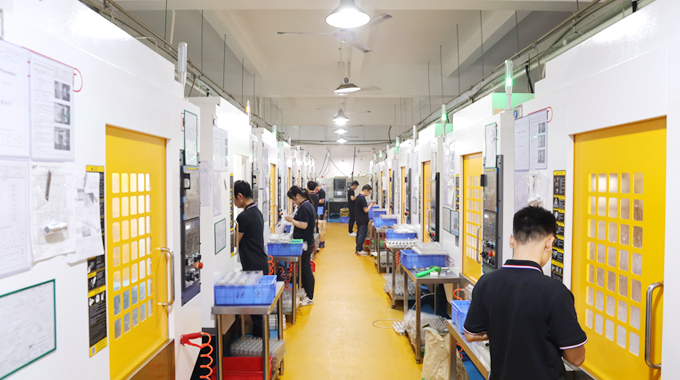
Choosing the right machining method depends on your project's specific requirements. While CNC machining offers superior precision, speed, and efficiency for large runs, conventional machining remains an excellent choice for simpler parts, prototypes, and smaller production volumes. By understanding the differences between these two methods, you can make an informed decision that aligns with your production goals.
1. What is the difference between CNC machining and machining?
CNC machining refers to computer-controlled machining, where computer programs guide the operation of machines like lathes, mills, and routers. This method offers greater precision, automation, and repeatability compared to conventional machining, which relies on manual labor and manual controls to operate machines. CNC machining is more efficient for large-scale production runs and complex part geometries, while conventional machining is often more suited for custom or small-batch work.
2. What are the advantages of CNC machines over conventional machines?
CNC machines offer numerous advantages, including:
These benefits make CNC machining ideal for mass production and industries requiring high precision, like aerospace or medical device manufacturing.
3. What are the 3 disadvantages of CNC machines?
While CNC machining has many benefits, it also has some drawbacks:
4. What is the difference between CNC and ordinary?
The term "ordinary" usually refers to conventional, manual machining methods. CNC machining differs in that it is automated, controlled by a computer program, and typically offers higher precision, faster production times, and the ability to handle complex parts. "Ordinary" methods, such as manual milling or lathe operations, require the machinist to control the machine physically, which can be slower and more prone to human error.
5. What is the difference between CNC and conventional machinists?
CNC machinists are responsible for programming, setting up, and operating CNC machines, whereas conventional machinists manually control and adjust machines for tasks like drilling, turning, and milling. CNC machinists often work with software to design and input manufacturing instructions, while conventional machinists rely on manual tools and adjustments to shape materials.
6. What is the difference between CNC machining and AM machining?
CNC machining (Computer Numerical Control) involves subtracting material from a solid block using cutting tools, such as mills or lathes, to create precise parts. AM (Additive Manufacturing), commonly known as 3D printing, involves adding material layer by layer to create parts. CNC is ideal for precise, complex geometries, while AM is beneficial for rapid prototyping and creating intricate, lightweight structures that would be difficult to achieve with subtractive methods.
7. What are the advantages of CNC over manual machining?
CNC machining offers several advantages over manual machining:
8. Are CNC operators the same as machinists?
While both CNC operators and machinists work with machines to create parts, their roles differ. CNC operators are specifically trained to run computer-controlled machines, while machinists may work with both manual and CNC machines. Machinists often have broader skills in various machining techniques, while CNC operators focus more on programming, setting up, and maintaining CNC equipment.
9. What is the difference between manual machinists and CNC machinists?
Manual machinists operate conventional machines like lathes, mills, and drills, adjusting them by hand to shape materials. CNC machinists, on the other hand, program and operate computer-controlled machines that perform tasks automatically based on pre-defined instructions. CNC machinists require knowledge of computer programming, while manual machinists rely on their ability to make precise adjustments manually.
10. What is conventional machining?
Conventional machining refers to conventional methods of manufacturing where machines are operated manually by a machinist. This includes processes such as milling, turning, drilling, and grinding. Conventional machining typically requires more human intervention and manual adjustments compared to CNC machining, which is more automated and precise.
11. Is there a future for CNC machining?
Yes, CNC machining has a bright future. With continuous advancements in technology, such as increased automation, more advanced materials, and improved precision, CNC machining remains essential for industries such as aerospace, automotive, and medical manufacturing. Additionally, the rise of Industry 4.0, IoT (Internet of Things), and AI integration into CNC systems is set to further enhance its capabilities and efficiency.
12. Is CNC a milling machine or a lathe?
CNC machining can refer to a wide range of machine tools, including CNC milling machines, CNC lathes, CNC routers, and CNC grinders. Both milling machines and lathes are commonly used in CNC machining, with each designed for different types of material removal processes. CNC milling machines use rotary cutters to remove material, while CNC lathes rotate the workpiece to shape it with stationary cutting tools.
13. What does the M code in a CNC machine mean?
M codes are machine codes used in CNC programming to control non-cutting functions of the machine, such as turning on the spindle, starting or stopping coolant, or changing tools. For example, M03 is used to start the spindle in a clockwise direction, while M05 is used to stop the spindle. These codes help automate the machine’s various functions during the machining process.
14. Is CNC better than manual?
CNC machining is generally considered better than manual machining for high-precision, complex, and large-scale production. CNC machines offer higher repeatability, efficiency, and accuracy, which are essential in industries such as aerospace, automotive, and medical device manufacturing. However, manual machining still has its place for smaller, custom projects or when flexibility is required, particularly for prototypes or low-volume production runs.
